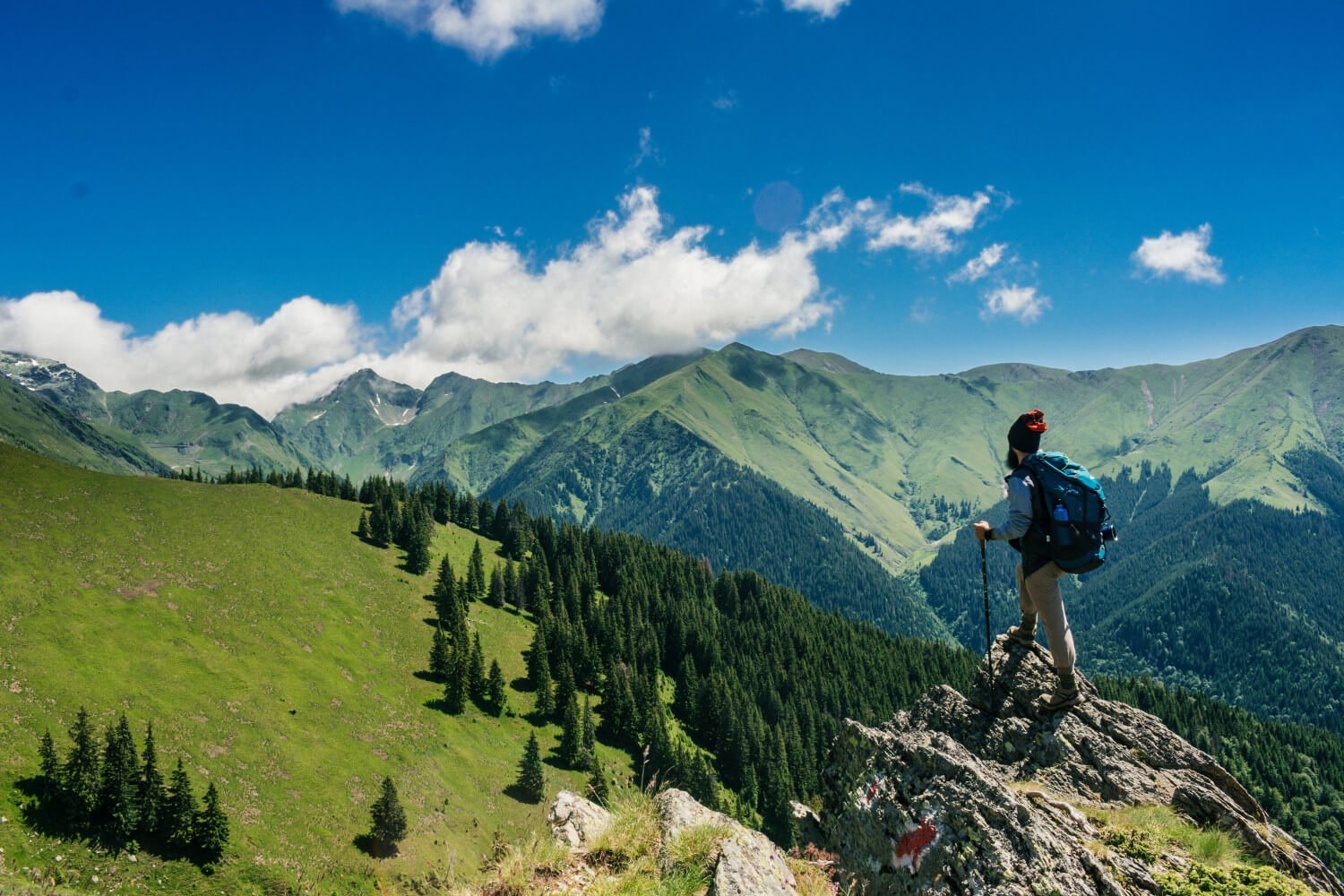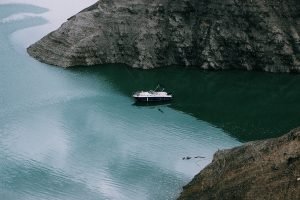Thailand is one of the world’s most popular tourist destinations on the planet receiving an estinated 15.9 million tourists in 2010. Perfect marketed images of tuk-tuks, long-tail boats, glimmering temples and glamorous Thai dancers are what the mind conjures up when someone says Thailand.
Living here for two years, I have had the immense pleasure of seeing many different sides of this fascinating country, the hugely celebrated and the unassuming, the popular and the forgotten.
Each place has its unique surprises and my experience makes me cringe when I hear some stuck up backpackers say that Thailand has nothing for them in way of adventure anymore. As someone once said, “only boring people get bored.” Especially in Thailand.
10 Unique Places in Thailand
1. MaeKlong Market, Samut Songkram
MaeKlong Market in the province of Samut Songkram is an unbelievable example of Thailand’s ability to thrive in regardless of circumstances. The market is situated on the train tracks of MaeKlong Railway and eight times a day, seven days a week, the train passes in and out happily.
The train literally goes directly through the middle of the market stalls and over the goods on sale. Rather than relocate a market which had been running for decades in this area, locals adapted superbly so that daily life was not interrupted.
The vendors simply pull back any awning that sticks out too far within centimeters of where the train will pass and usher shoppers to step back. Locals know the exact time each day the train arrives and once it has passed through, the awnings are recoiled and they are back on the tracks laying out their fruit, meat and seafood as if nothing happened.
2. The Forensic Museum, Bangkok
Have you always wanted to see a scrotum with elephantiasis? Er… no, us neither! Bangkok’s forensic museum holds a bizarre collection of everything that is weird, outrageous and just downright freaky about Thailand.
For anyone looking to investigate a very different side of Thailand, look no further… though be warned this place is not for the squeamish or faint of heart!
With macabre interest in death and illness, the museum displays a collection of gruesome photographs of decapitations, deformed feotus’s in glass jars, an exhibition of skulls with bullet wounds through the head and the star attraction, the embalmed body of 1950’s Chinese cannibal, Si Quey. Next to the cabinet read the handwritten words “because he loves to eat human’s organ not because of starving”.
3. Phuket Town
Most people head to Phuket strictly for beaches and all night parties, however, what most people fail to appreciate is Phuket town itself. Dating back to the 16th century, colonial powers had an interest in Phuket’s natural resources, namely its booming tin mining industry.
As a result, the architecture of the town is a mix of Sino-Portuguese shop-house and Sino-Colonial mansion style. Despite it being home to the cheapest digs in town (the famous On-On Hotel was featured on the opening scene’s of the movie, The Beach!) there is a surprising lack of backpackers roaming the town.
Artsy tea-shops and atmospheric jazz bars have now taken residence in the old shop-houses and there are some great (and cheap) Chinese-influenced eating houses. Visitors heading there in October are in for a treat as the Vegetarian Festival takes place with incredible feats of self-flagellation and body piercing.
4. Mae Sot or “Little Burma”
Nicknamed “Little Burma,” due to the presence of over 200,000 Burmese refugees living in the area, the border town of Mae Sot doesn’t really feel like Thailand at all.
Walking around the local market you will see women with a yellow paste, ‘thananka’ bark smeared on their cheeks and men, wearing the traditional Burmese wrap-around skirt, the longyi.
The town is fascinating in the sense that it makes you realize just how complex the Burmese nationality is with ethnic minorities from Karen, Kachin, Mon, Arakanese; each with their own separate customs, cultures, dress and cuisine.
Eat chapatis and dal in the Muslim quarter in the morning for breakfast and then feast on Karen curries in the evening. For backpackers who are considering visiting what is now called ‘Myanmar,’ Mae Sot is an intriguing taster.
Plus, the bridge over the River Moie has just opened for border runs so the town may well be seeing more backpackers here in the coming months.
5. Nan Province
The remote province of Nan is a mountainous, forested area that for many years was an autonomous kingdom cut off from the rest of Thailand and the outside world.
The area remains somewat separated from the rest of Thailand in the fact that very few tourists venture here. Home to the largest national park in Thailand, the beautiful Doi Phu Kha National Park, the area has an abundance of impressive limestone caves, karats and waterfalls, not to mention the ancient salt mine village, or ‘Ban Bo Klua’ as it is known in Thai.
The best way to get to Nan province is by motorbike from Chiang Mai on roads which are superb for riding passing through spectacular mountain scenery. The town of Phayao, located on the picturesque Phayao Lake is the perfect stop off point to explore more stunning mountain scenery and nearby hill-tribe villages.
6. The Trang Islands
Just four hours by bus from the tourist hotspot, Krabi, lie the ‘secret’ islands of Trang, a group of 47 separate craggy isles each one blessed with raw, unspoilt beauty.
The area which consists of 120-mile coastline remain untouched by tourism and you will find no fast food restaurants, internet cafes or tacky souvenir shops here. During low season (June-September) the islands are completely deserted and you will have to persuade the local fisherman to take you out from the main port of Trang to the outer islands.
It is quite possible that you will be the only Westerner there as you explore the beautiful white sandy beaches, limestone caves and waterfalls that were recently designated a national parkland.
The accommodation is cheap and very basic but with a location so idyllic, the Trang islands are like Thailand 20 years ago. If it is true escapism you are after, the Trang Islands just may be your adventure playground.
7. The White Temple and the Black House, Chiang Rai
It is true that with such an abundance of noteworthy temples in South East Asia, at times during your trip you may feel guiltily ‘templed out.’ After coming from Thailand’s capital of culture, Chiang Mai with its 300+ temples, the last thing you want to do in Chiang Rai is see another!
Yet, the White Temple just may be different from anything you will have seen before with its eerie concrete hands and ghostly heads surrounding the entrance of the temple and its huge silver tusks reflecting the light as you walk up to the daunting doors.
The temple is like something out of a strange gothic fairy tale and was built by artist ‘Ajarn Chalermchai Kositpipat’ as a Buddhist offering. Less than 2km from the White Temple, you will find the mysterious ‘Baan Dam’ or the Black House, built interestingly by Kositpipat’s former student, artist Thawan Duchanee.
With an extensive collection of taxidermy, including the entire skeleton of an elephant, the Black House is a bizarre contrast to the pure White Temple. An antagonistic creation by the artist perhaps?
8. Khao Yai National Park and Bat Cave
Every night without fail as the sun begins to set in Eastern Thailand, a thick black cloud spouts from the mouth of an eerie cave on the edge of Khao Yao National Park.
They are thousands upon thousands of ‘wrinkled lipped’ bats who come out to hunt at twilight creating what seems like one giant living organism in a ribbon pattern across the sky.
Just four hours from Bangkok, the park is also home to 67 species of wild mammal including the Asiatic black bear, Asian elephant, gaur gibbon and even tigers! Visitors can walk the many hiking trails in the area to spectacular waterfalls, observation points and even a dinosaur footprint (a four day trek!).
9. Doi Inthanon National Park
It was this time last year when hoards of Thai people raced to the peak of the highest mountain in Thailand (2565 metres) to get their first experience of frost! Whilst English people find this incredulous, the park does have more to offer than its cold winter temperatures.
Riding a motorbike through the park is the best way to explore a landscape that changes with each turn; at times rugged, misty, cold and eerie and then almost mediterranean with lush rolling hills, rhododendron bushes and smiling farmers waving as they plough the fields in the sun.
On the way up the mountain (you can reach the summit by road) there is a Hmong hill-tribe settlement where visitors can stay overnight in a homestead and observe the organic farming practices here which are a Royal Project initiated by the current King of Thailand to stop the hill tribes from growing Opium.
Although the area of Doi Inthanon is well set up for tourists, it is rare to spot backpackers here.
10. Tarutao National Marine Park and the Deep South
Right on the border with Malaysia, Thailand’s deep south is very underdeveloped compared to Krabi and the Gulf islands. Today, it remains an area which tourists are wary of due to continued travel warnings because of the Muslim fighting in the area.
However, this area has more than one surprise up its sleeve, not least the stunning Tarutao National Marine Park, an archipelago of 51 exquisite islands which were the setting for Thailand’s version of the Survivor TV program.
One of the first national marine parks in Thailand, its sparkling beaches, coral reefs and virgin rainforest remain in pristine condition. It is hard to believe that the largest island, Koh Tarutao was once a huge prison with over 10,000 prisoners sent there.
One of the islands here, Koh Lipe has managed to evade park protection and is beginning to develop into a popular resort. Go now before pressure from developers to build more resorts becomes too much! The park is closed May-November.



























+ There are no comments
Add yours